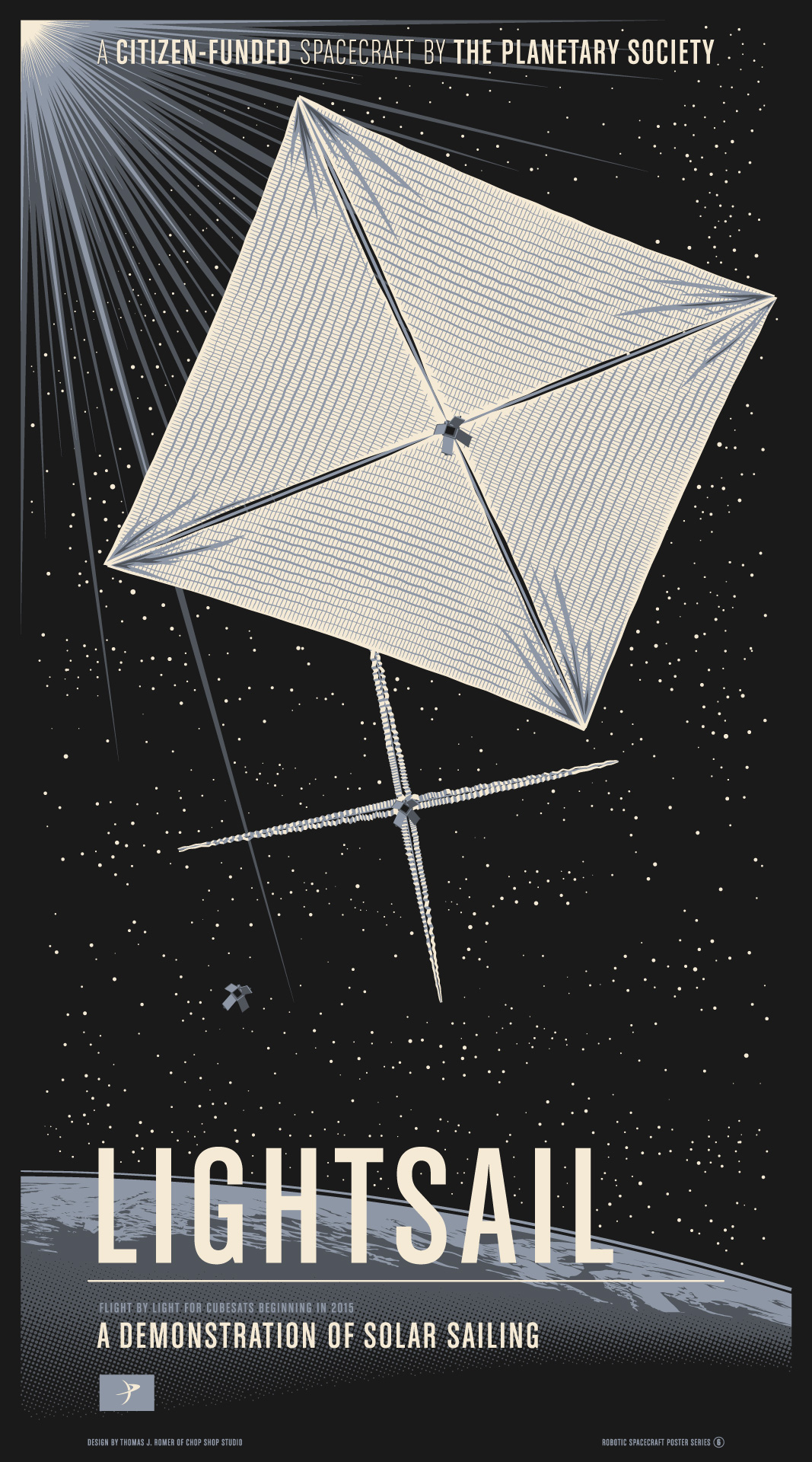 Okay, so it is not totally real. An IR filter was added to the normal RGB files to exaggerate the clouds. Also made the rings appear red. But we couldn’t find a version of this image without the added filter. So — it is about 80% true color. Seen on The Planetary Society image library by Judy Schmidt.
Okay, so it is not totally real. An IR filter was added to the normal RGB files to exaggerate the clouds. Also made the rings appear red. But we couldn’t find a version of this image without the added filter. So — it is about 80% true color. Seen on The Planetary Society image library by Judy Schmidt.
Old Timey Jupiter
 I love this “old timey” animation of Jupiter from Voyager 1. It reminds me of these Mars and Moon shots posted so long ago. The animation was created by unmannedspaceflight.com user Astroboy and modified by user Herobrine.
I love this “old timey” animation of Jupiter from Voyager 1. It reminds me of these Mars and Moon shots posted so long ago. The animation was created by unmannedspaceflight.com user Astroboy and modified by user Herobrine.
Cyber Tuesday Spaceprobe Deal
 For two days only, buy one of our limited edition Robotic Spacecraft Series Prints and get the full suite of vinyl stickers for free. This is a total savings of $24 and would serve as a great stocking stuffer to follow the presentation of the print.
For two days only, buy one of our limited edition Robotic Spacecraft Series Prints and get the full suite of vinyl stickers for free. This is a total savings of $24 and would serve as a great stocking stuffer to follow the presentation of the print.
Pluto: Sending Geophysicists Back to Drawing Boards
 I have never seen anything like this. What we are seeing are many different kinds of materials in two image frames (mosaic by Emily Lakdawalla). The shiniest textures seen here are more than likely water ice, the darker material may be tholins (a theoretical substance predicted by Carl Sagan himself) and frozen carbon monoxide — but we don’t know for sure.
I have never seen anything like this. What we are seeing are many different kinds of materials in two image frames (mosaic by Emily Lakdawalla). The shiniest textures seen here are more than likely water ice, the darker material may be tholins (a theoretical substance predicted by Carl Sagan himself) and frozen carbon monoxide — but we don’t know for sure.
Thus far, Pluto is so unexpected and so many times more exotic than I would have ever guessed.
WOW
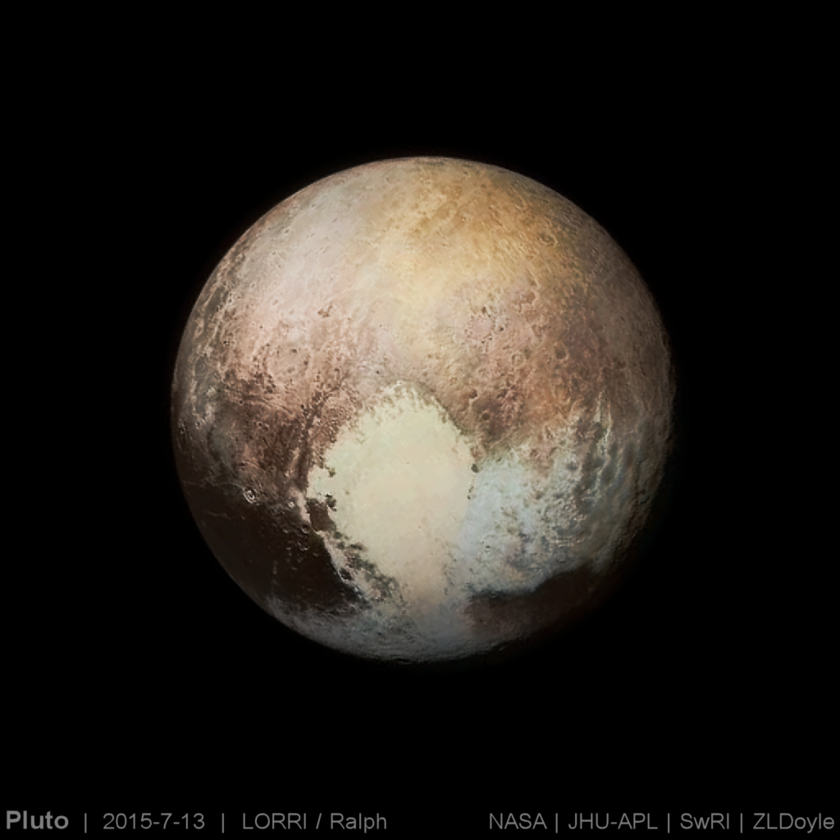 Shown above is an early best guess at Pluto’s actual colors. The “color” image that has saturated all forms of media is actually just a monochrome with the colors seen earlier in the mission laid over it. So that is really just an artificial duotone. Shown above is a gorgeous color image with best-guesses at Pluto’s true colors based upon chemical maps made by New Horizons.
Shown above is an early best guess at Pluto’s actual colors. The “color” image that has saturated all forms of media is actually just a monochrome with the colors seen earlier in the mission laid over it. So that is really just an artificial duotone. Shown above is a gorgeous color image with best-guesses at Pluto’s true colors based upon chemical maps made by New Horizons.
New Horizons’ Encounter Looking Epic
 The images coming back so far from Pluto look incredible. For the first time since Voyager uncovered exactly how exotic the moons of Jupiter really were — we are seeing things at Pluto that few saw coming. Some images show Pluto looking like a real-life version of a sci-fi illustration from the 1960s, with all kinds of lines, circles and spots of which we still know very little about.
The images coming back so far from Pluto look incredible. For the first time since Voyager uncovered exactly how exotic the moons of Jupiter really were — we are seeing things at Pluto that few saw coming. Some images show Pluto looking like a real-life version of a sci-fi illustration from the 1960s, with all kinds of lines, circles and spots of which we still know very little about.
Shown above is the Chop Shop Studio poster celebrating New Horizons at Pluto and is being updated almost every day when new images are released from the mission. This is the third update from July 11 data. The design along with two other missions is being crowd-funded on Kickstarter right now and you can still vote on which missions make the cut for posters #8 and #9.
Ceres Bright Spots Still Unknown
 Still — as close as this is, the nature of these spots are unknown. Must… get… closer… Read more.
Still — as close as this is, the nature of these spots are unknown. Must… get… closer… Read more.
The Man in the… Pluto
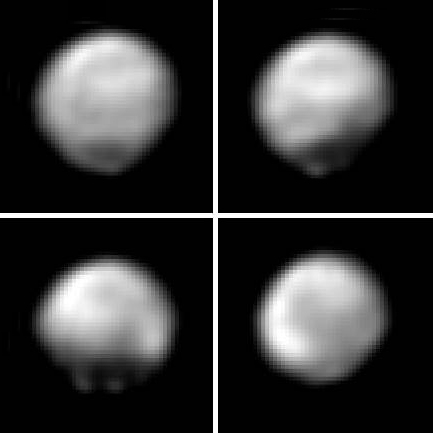 Pluto is starting to reveal it’s face.
Pluto is starting to reveal it’s face.
This is the last visit of this kind for the forseeable future. Apart from a few of the other larger Kuiper Belt objects, this is the only planned exploration of a major body in our solar system left that has never been seen by human eyes before. Every planet, all the major moons and the most significant asteroids have all been revealed if not globally mapped. There would have to be a new mission planned to Eris, Makemake or to one of the other Kuipers to see something like this again. Even if a mission like that was approved, it would be years of development plus another 10 year slog before arriving at such distant targets.
It is worth noting that as soon as 2017, New Horizons is expected to make another flyby of a much smaller Kuiper Belt object and then again in 2019 — with a possibility of a third if one can be found. So even after Pluto is over… there will still be a few encores.
Help Kickstart LightSail
Planetary Society’s first ever Kickstarter is up and it is already sailing toward it’s goal. In just 24 hours they are halfway to reaching their 200K goal! This will fill the existing budget gap the Society is currently operating under and will make LightSail a fully funded before it’s first planned launch later this month.
A part of the rewards in the offing is Chopshopstore’s Poster #6 from their Historic Robotic Spacecraft Series. However, about 2/3 of all the large scale screenprints are already spoken for. So if you want to help the Society’s first campaign as well as secure #6 in this series — do it asap.
Ceres Bright Spots
 New images of Ceres show the bright spots as a series of smaller spots in close proximity. This makes it fairly certain that the source is a highly reflective surface — such as ice.
New images of Ceres show the bright spots as a series of smaller spots in close proximity. This makes it fairly certain that the source is a highly reflective surface — such as ice.
A Curiosity Sunset on Mars
 The first time we had one of these it was shot by Spirit in 2006 and then this one last year also by Curiosity.
The first time we had one of these it was shot by Spirit in 2006 and then this one last year also by Curiosity.
The Color of the Venusian Surface
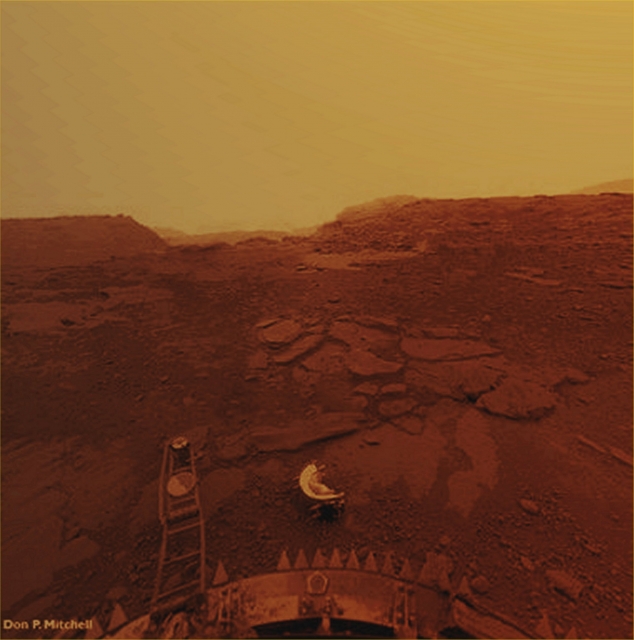 Finally found a colorized version of Don P. Mitchell’s work on the Soviet Venera mission which reveals Venus as one would see it standing upon the surface. The color was added to the image by someone better qualified than myself and is most likely closer to the reality than what I had posted a few years ago. According to the Italian Astronomy Photo of the Day, “this job carried out by the Italian Researcher Dr Paolo C. Fienga”.
Finally found a colorized version of Don P. Mitchell’s work on the Soviet Venera mission which reveals Venus as one would see it standing upon the surface. The color was added to the image by someone better qualified than myself and is most likely closer to the reality than what I had posted a few years ago. According to the Italian Astronomy Photo of the Day, “this job carried out by the Italian Researcher Dr Paolo C. Fienga”.
Uh, That’s No Asteroid?
Ceres: Several White Spots
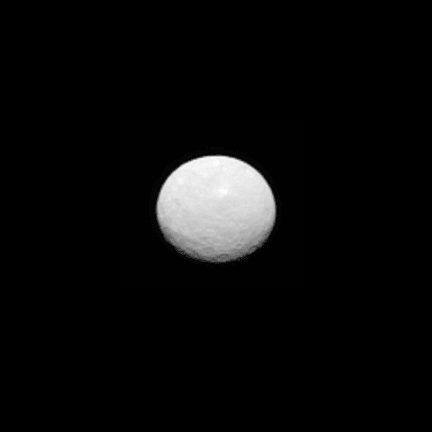 There are now several white spots appearing on Ceres as Dawn makes it’s final approach to the dwarf planet. Any knee-jerk expectation say that there is merely a brighter material beneath the surface that was revealed by ancient impacts. Why the surface is darker and the underneath material is brighter (see Iapetus) would be a mystery… but perhaps they still may be related to the active geysers scientists have previously predicted due to data provided by The Herschel Infrared Space Observatory.
There are now several white spots appearing on Ceres as Dawn makes it’s final approach to the dwarf planet. Any knee-jerk expectation say that there is merely a brighter material beneath the surface that was revealed by ancient impacts. Why the surface is darker and the underneath material is brighter (see Iapetus) would be a mystery… but perhaps they still may be related to the active geysers scientists have previously predicted due to data provided by The Herschel Infrared Space Observatory.
We shall soon see.
Dawn Begins Observations
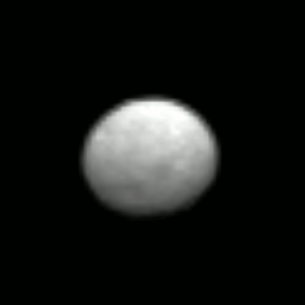 The Dawn spacecraft is approaching Ceres and has begun observations, including this first animation. Ceres is a dwarf planet that resides within the Asteroid Belt between Mars and Jupiter and is the last unexplored spherical body (that we know of) that resides within the orbit of Neptune.
The Dawn spacecraft is approaching Ceres and has begun observations, including this first animation. Ceres is a dwarf planet that resides within the Asteroid Belt between Mars and Jupiter and is the last unexplored spherical body (that we know of) that resides within the orbit of Neptune.
Earlier observations by the Herschel Infrared Space Observatory have suggested the presence of water vapor in the form of plumes near the surface of Ceres. There is even the chance that this comparatively tiny body may somehow maintain a tenuous atmosphere. If any of this turns out to be the case, we currently have no models to suggest how geological activity could be generated on such a small world. We have known for a very long time that internal heating and geological activity is common on bodies whose mass is large enough to create their own internal furnaces (Earth, Venus and gas giants like Jupiter). More recently we have discovered smaller geologically active worlds that generate internal heat from tidal forces inflicted by their host planet and neighboring moons (Io, Enceladus, probably Triton). But we have never seen such a small isolated body such as Ceres manage to do anything but display ancient craters and fracturing from cataclysms dating back to the formation of the solar system.
Logic tells me to expect to see a grey cratered ball when Dawn goes into orbit around Ceres this Spring, but the experience of Voyager and Cassini tells me not to expect anything but the unexpected.
Also, what is that bright dot? It has been in every image of Ceres since Hubble started observations to support the coming encounter.
The Surface of a Comet
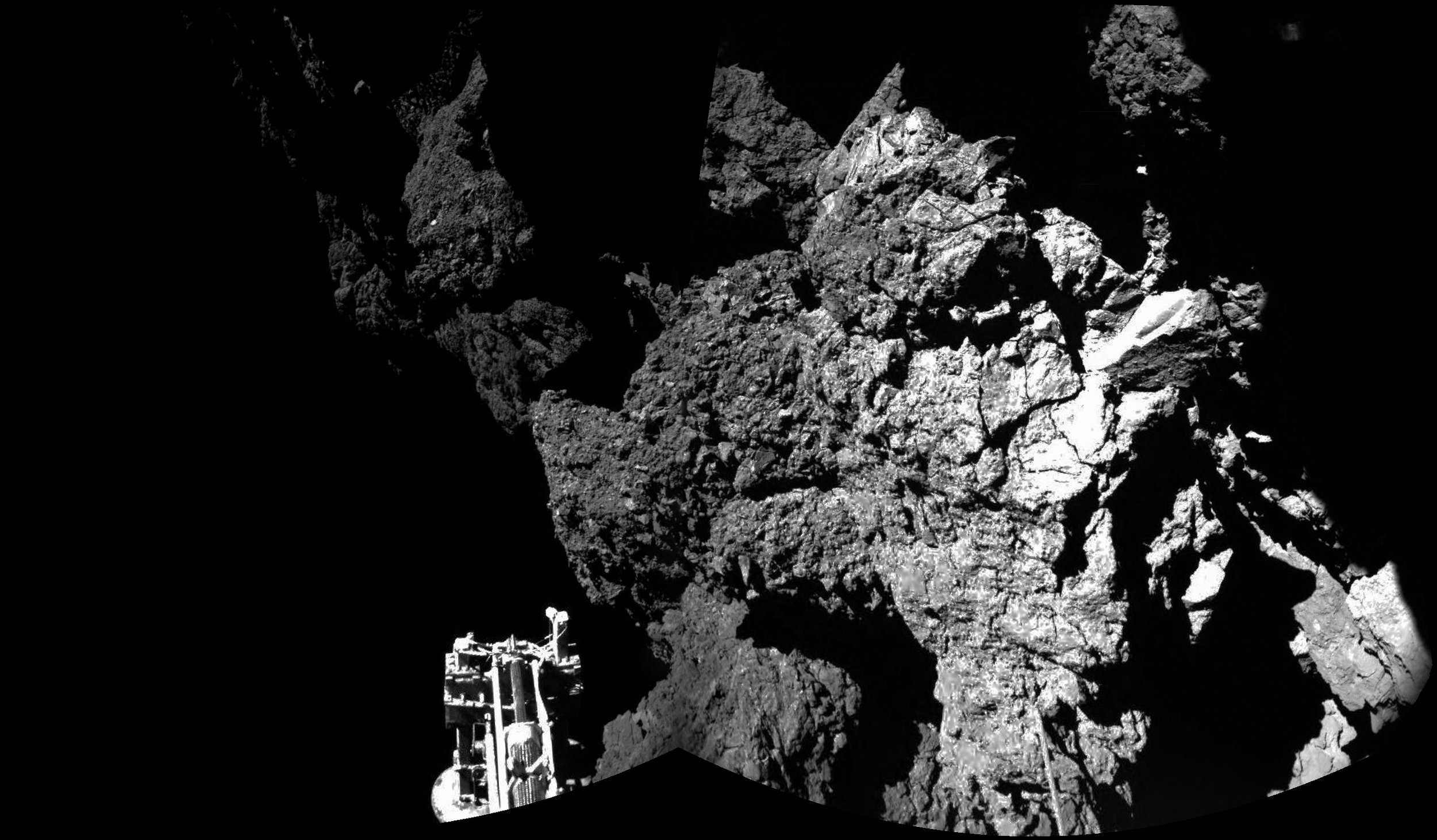 This was the view from Rosetta’s Philae lander when it came to rest upon Comet Churyumov-Gerasimenko. What is shown is one of the landers feet (bottom center) and a very craggy surface beyond. After bouncing 3-4 times, scientists assume that Philae finally came to rest set precariously upon an uneven surface. Despite these images and images taken from Rosetta orbiting above — they have yet to find exactly where the lander has settled.
This was the view from Rosetta’s Philae lander when it came to rest upon Comet Churyumov-Gerasimenko. What is shown is one of the landers feet (bottom center) and a very craggy surface beyond. After bouncing 3-4 times, scientists assume that Philae finally came to rest set precariously upon an uneven surface. Despite these images and images taken from Rosetta orbiting above — they have yet to find exactly where the lander has settled.
Shown above is the small journey Rosetta took before resting in a spot that has yet to be defined. Clearly shown are the mid-bounce images of the probe as it tumbled to its destination. Soon after these events the probe went silent due to a lack of power source: sunlight. It is thought that the probe may be covered in comet dust or simply sitting in a semi-permanently shaded spot unable to wake up.
On the bright side, even if this is all we hear from Philae — the mission is considered a successful landing as it did manage to transmit data and images from the surface. On an even brighter side… Mission specialists say that as the comet gets nearer to the sun and parts of whatever is hiding the probe melts away, could expose it’s starving solar panels and wake the probe up again renewed. Meaning that we could hear again from the small lander come this August.
Antarctica From Space
 It is rare that an Earth images graces these pages because they are so much more common. But take a look at this. Something you do not see very often because the view requires a fairly rare polar orbit. Get the super-hires here. Thanks to Sploid/Gizmodo.
It is rare that an Earth images graces these pages because they are so much more common. But take a look at this. Something you do not see very often because the view requires a fairly rare polar orbit. Get the super-hires here. Thanks to Sploid/Gizmodo.
Poster #3: Curiosity
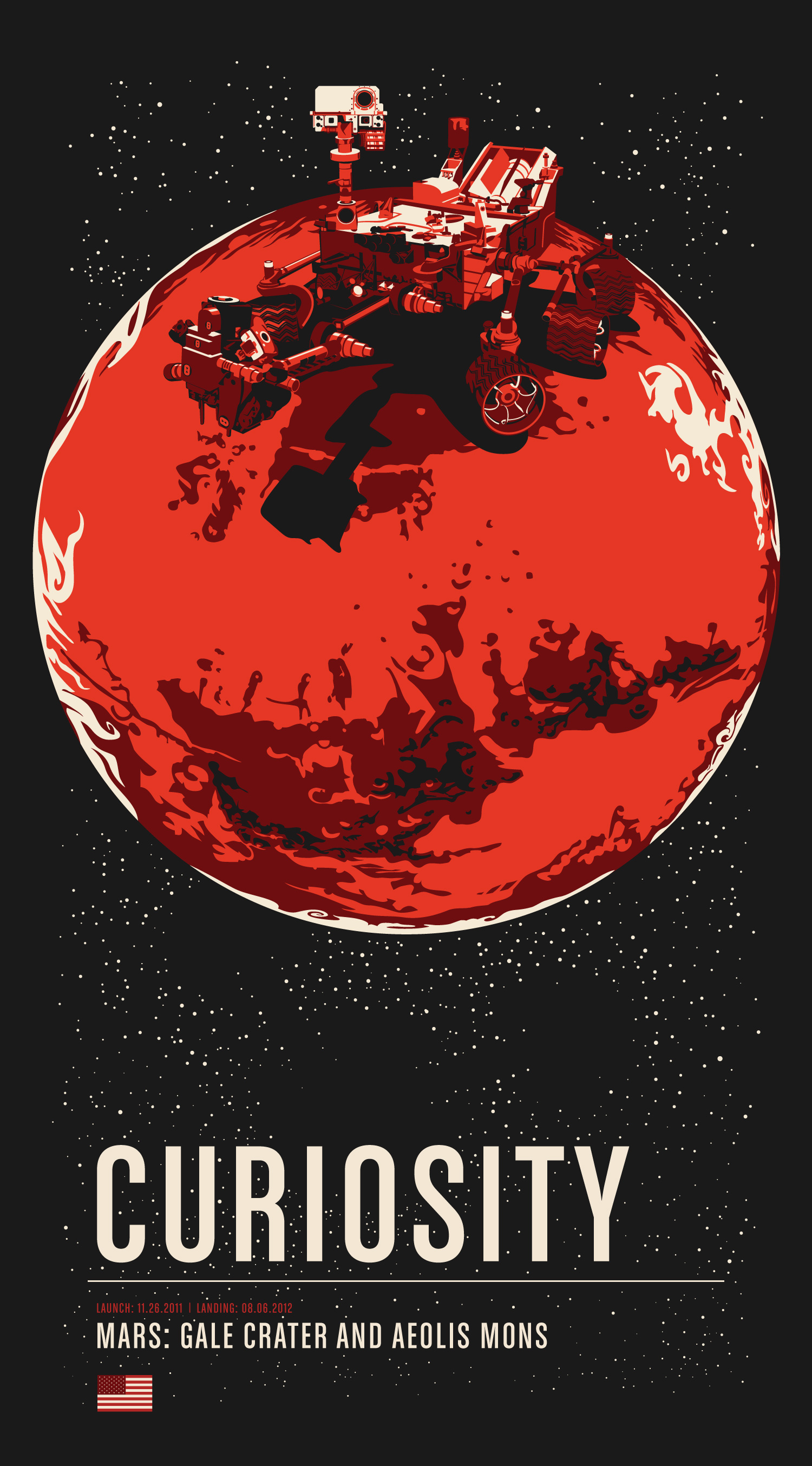 All three designs are published for our Kickstarter project. Back us today and get this Curiosity poster, Voyager or Cassini (or all three) as large scale screen-printed posters.
All three designs are published for our Kickstarter project. Back us today and get this Curiosity poster, Voyager or Cassini (or all three) as large scale screen-printed posters.
Poster #2: Cassini / Huygens
 Consider backing our Kickstarter project and get this Cassini poster, Voyager or Curiosity (or all three) as large scale screen-printed posters.
Consider backing our Kickstarter project and get this Cassini poster, Voyager or Curiosity (or all three) as large scale screen-printed posters.
The Top 20 Robotic Spacecraft in History
The poll is complete and the most popular robotic spacecraft in history have been selected. Thanks to the efforts by The Planetary Society. The top three missions selected here now represent the themes of our series of screen-printed posters celebrating the history of robotic space exploration. To support this effort please see our campaign page at Kickstarter.
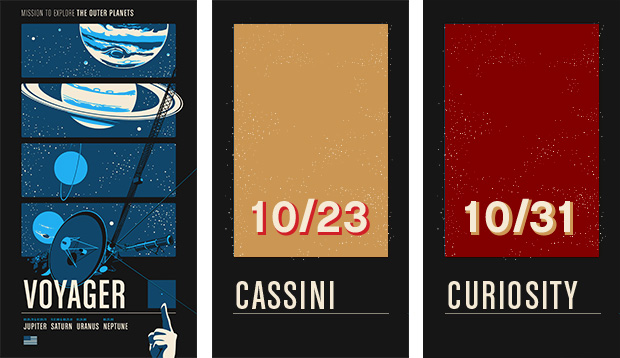
The Voyager Program As we expected the Voyager Program came into the top spot with 507 votes (18.5%). The poster for this design is already complete and available for viewing on the campaign page.
Cassini / Huygens Cassini takes poster #2 with 432 votes (15.7%), effectively eclipsing it’s sister probe Galileo. This design is expected to be completed on or before October 23rd.
Mars Science Lab (aka Curiosity) The newest member of the robotic Martian community of surface rovers, Curiosity arrived in 2012 and has stolen the thunder of the previous Mars Exploration Rovers with 340 votes (12.4%). This design is expected to be completed on or before October 31st.
As for the rest of the list, here is how things all panned out:
- The Mars Exploration Rovers 189 (6.9%)
- Sputnik (Earth) 169 (6.2%)
- The Viking Program (Mars) 146 (5.3%)
- New Horizons (Pluto) 136 (5.0%)
- Rosetta (comet) 123 (4.5%)
- Galileo (Jupiter) 121 (4.4%)
- Venera (Venus) 67 (2.4%)
- Pioneers 10 & 11 (Jupiter & Saturn) 66 (2.4%)
- The Mariner Program (Mercury, Venus & Mars) 47 (1.7%)
- Mars Reconnaissance Orbiter 40 (1.5%)
- Hayabusa (asteroid) 39 (1.4%)
- Mars Express39 (1.4%)
- Deep Impact / Epoxi (comet) 36 (1.3%)
- Stardust (comet) 26 (0.9%)
- Messenger (Mercury) 25 (0.9%)
- Maven (Mars) 22 (0.8%)
- Dawn (Vesta & Ceres) 22 (0.8%)
Should we reach our stretch goals, this would also make poster #4’s theme the Opportunity & Spirit rovers and poster #5’s surprising but historically honorable theme going to Sputnik.

